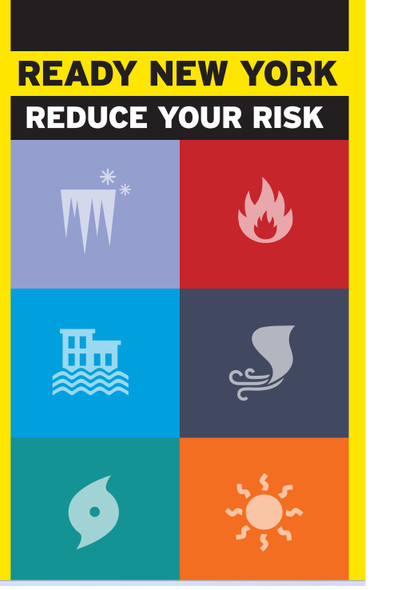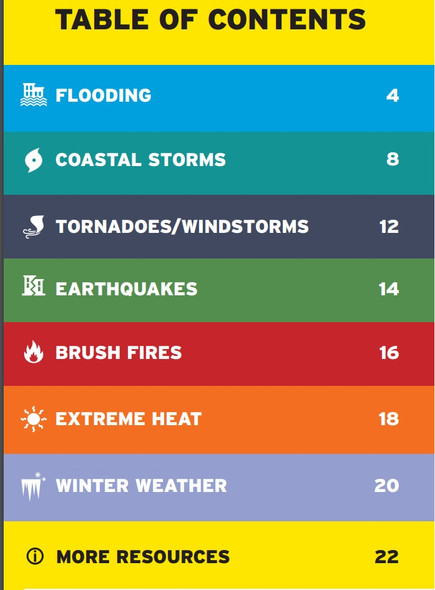- Home
- ** FREE DOWNLOADS FDNY **
- Tenant / owner emergency plan-" my emergency plan" New york (pdf file)
hpdsigns.nyc
Tenant / owner emergency plan-" my emergency plan" New york (pdf file)
- SKU:
- Tenant / owner emergency plan-" my emergency plan" New york
- UPC:
- MPN:
- Tenant / owner emergency plan
Description
The Importance of Having an Emergency Plan for Fires, Natural Disasters, or Other Emergencies: Planning in Advance Saves Lives
Emergencies like fires, natural disasters, or other unforeseen events can strike without warning, turning an ordinary day into a potentially life-threatening situation. Whether it’s a fire, earthquake, flood, or any other emergency that requires the evacuation of a building, having a detailed plan in place can make the difference between life and death. This article discusses why it’s critical to have an emergency plan and the importance of planning everything in advance to ensure a safe evacuation.
1. Emergencies Happen Without Warning
Fires, natural disasters, and other emergencies often occur without warning, leaving little time to react. Fires can spread rapidly, earthquakes can strike within seconds, and floods can engulf buildings in minutes. Without an emergency plan, confusion and panic can ensue, leading to delayed evacuations and increased risk of injury or death. An emergency plan provides a clear course of action, ensuring that everyone knows what to do the moment danger arises.
2. Reduces Panic and Saves Time
One of the greatest threats during an emergency is panic. When people are unprepared, they are more likely to make decisions driven by fear and uncertainty, which can lead to dangerous choices, such as fleeing to unsafe areas or attempting to retrieve belongings. An emergency plan reduces panic by outlining specific steps for evacuation. When everyone knows exactly what to do, it reduces hesitation and confusion, allowing for a quicker, more organized evacuation that can save lives.
3. Prepares for Different Types of Emergencies
Emergencies come in many forms, and each may require a different response. A fire requires immediate evacuation through designated exits, while a tornado might necessitate sheltering in place. Earthquakes could demand moving away from windows and avoiding elevators. A well-prepared emergency plan accounts for various types of emergencies and provides different protocols depending on the situation. This level of preparedness ensures that everyone in the building is equipped to respond effectively, no matter what type of disaster strikes.
4. Ensures Safe and Efficient Evacuations
Evacuating a building safely and efficiently requires more than just knowing the exits. A comprehensive emergency plan ensures that everyone knows the best escape routes and where to meet once outside the building. For multi-story buildings, it's especially important to plan alternative exits in case stairwells or pathways are blocked. Conducting regular fire drills and emergency evacuation exercises is key to reinforcing this knowledge, allowing people to react instinctively when an emergency occurs.
5. Accounts for Special Needs
Every building or workplace includes people with varying abilities and needs. Some may have mobility challenges, others might be young children or elderly individuals, and still others might require medical assistance. An emergency plan that accounts for special needs ensures that everyone can be safely evacuated, no matter their circumstances. This could involve assigning specific roles to assist individuals who may need extra help or pre-arranging evacuation tools like stair chairs for those with mobility impairments. Planning ahead guarantees that no one is left behind in an emergency.
6. Organizes Roles and Responsibilities
An effective emergency plan assigns roles and responsibilities to individuals so that everyone knows what to do in case of an emergency. In a workplace, this could mean appointing fire wardens or evacuation leaders to guide people to safety. In a family setting, it might involve designating someone to gather pets or essential supplies. Clear delegation of tasks minimizes confusion and ensures that critical steps, such as calling emergency services or accounting for everyone, are not overlooked in the chaos.
7. Identifies Key Emergency Tools
Emergency plans also include identifying the location and proper use of emergency tools like fire extinguishers, first aid kits, and emergency exits. Knowing where these tools are located and how to use them can help stop small emergencies from becoming larger disasters. For example, a fire extinguisher can be used to control a small fire before it spreads, but only if people are familiar with its location and operation.
8. Addresses Communication During Emergencies
Communication is crucial during any emergency. A well-thought-out plan includes clear communication strategies to ensure that everyone is aware of the situation and knows the next steps. This might involve setting up a phone tree or messaging system to alert everyone in a building, or simply having designated individuals with walkie-talkies or other means of communication. A plan also includes instructions on how to contact emergency services or notify family members, keeping everyone informed and connected during stressful moments.
9. Prepares for the Worst-Case Scenario
While it’s easy to assume that “it won’t happen to us,” the reality is that disasters and emergencies can happen anywhere and to anyone. Preparing in advance means being ready for the worst-case scenario, whether that’s a fire destroying part of a building, an earthquake collapsing infrastructure, or a flood cutting off power and access. Emergency planning also involves preparing an emergency kit with essentials like water, medications, and important documents, and knowing how to access these items if you need to leave in a hurry.
10. Legal and Regulatory Compliance
In many areas, having an emergency evacuation plan is not just a safety measure; it’s a legal requirement. Businesses, schools, and residential buildings are often required by law to develop, maintain, and practice emergency evacuation plans. Failure to comply with these regulations can result in fines or penalties, but more importantly, it puts the lives of occupants at risk. Having an emergency plan ensures compliance with local laws and provides an added layer of protection for everyone in the building.
Conclusion: Planning in Advance Saves Lives
The importance of having an emergency plan for fires, natural disasters, and other emergencies cannot be overstated. Emergencies can happen at any time and without warning, leaving little time to think or react. By planning in advance, you can ensure that you, your family, or your co-workers know exactly what to do, where to go, and how to stay safe in the event of an emergency.
Developing an emergency plan is a proactive measure that reduces panic, saves time, and increases the likelihood of a successful evacuation. It is a vital part of disaster preparedness, ensuring that everyone in the building has the best possible chance of escaping unharmed. By preparing now, you are not only protecting lives but also fostering a culture of safety that can make all the difference when disaster strikes
Legal Disclaimer
Business Representation We are a small, family-owned and operated business based in Brooklyn, New York. Please note that we are not affiliated with, sponsored by, or connected to the City of New York or any of its agencies. The website, products, services, and any hyperlinks found on our website are not endorsed by, approved by the City of New York or any of its agencies, including but not limited to the New York City Department of Housing Preservation and Development (HPD), Department of Buildings (DOB), Department of Transportation (DOT), Department of Sanitation (DSNY), and the Fire Department of New York (FDNY). We are also not affiliated with any federal, state, or local government agencies in any way.
Disclaimer of Legal Accuracy and Timeliness The information, codes, and due dates provided on this website or any related documentation may not be the most up-to-date version. Laws, regulations, and requirements may change, and the information here may not reflect the most current version. It is the user’s responsibility to verify the accuracy, completeness, and adequacy of the information contained on this site or any information linked to government sites. We do not guarantee or warrant the accuracy of the information presented, and we encourage you to check with official sources, such as state or federal agencies, for the most current information.
User Responsibility for Compliance Please note that legal requirements can vary based on your location and intended use of the products or services. It is solely the responsibility of the customer or user to ensure that they are in compliance with all applicable state, federal, local, and municipal laws and regulations. We make no warranty or representation regarding the suitability or sufficiency of the information provided on this website, including its use in compliance with any law.
No Legal or Professional Advice The information provided on this website and in any related materials is intended for general informational purposes only. It should not be interpreted as legal advice, professional advice, or a statement of law. For specific legal guidance or advice regarding your situation, we recommend consulting with a qualified attorney or other professional.
For more detailed information, please refer directly to the applicable laws and regulations for your state, city, and municipality.
Related Products


Emergency Preparedness/ Evacuation Planning Checklist for Tenant (pdf file)
hpdsigns.nyc


Emergency plan owner / Renter 2023 (pdf)
hpdsigns.nyc

Creating a Family Emergency Plan: Working Together to Stay Safe (pdf file)
hpdsigns.nyc

MAIL TENANT FIRE SAFETY PLAN FLYER ( FREE PDF FILE )
hpdsigns.nyc


Emergency Notification prior to the arrival of a weather emergency (pdf file)
hpdsigns.nyc

